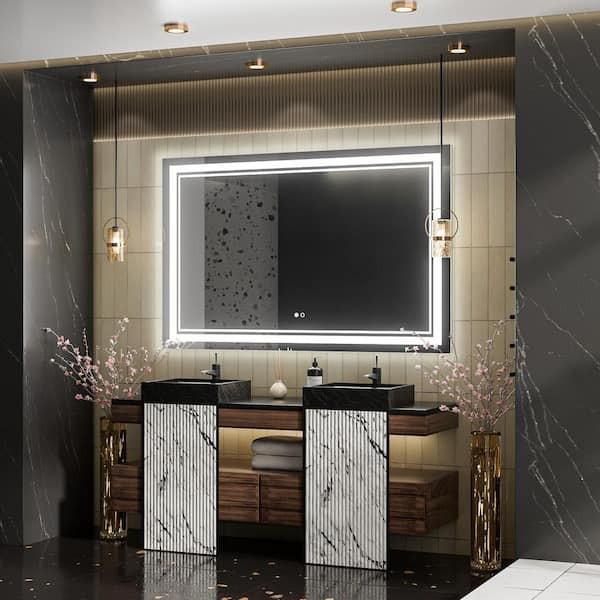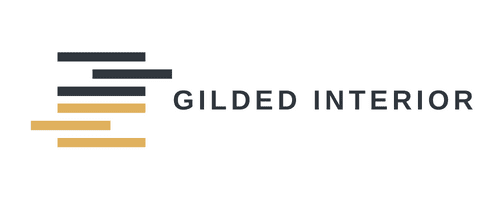In modern interior design, illuminated mirrors have become increasingly popular, especially in bathrooms. These LED-lit mirrors not only serve as functional fixtures but also add a touch of sophistication and style to the space. But have you ever wondered about the technology behind these illuminated mirrors? How exactly do they work? In this comprehensive guide, we’ll delve into the intricate workings of LED bathroom mirrors, breaking down their components and functionality.
LED bathroom mirrors are a contemporary solution to the need for both functional lighting and aesthetic appeal in bathrooms. With their ability to provide task lighting and enhance visual clarity, these mirrors have become an essential element of modern bathroom design. Let’s explore the key components and mechanisms that make LED bathroom mirrors work seamlessly.
Mirror Component: Reflective Coating

In the realm of LED bathroom mirrors, the reflective coating plays a fundamental role in transforming ordinary glass into a functional mirror. Here’s a more detailed explanation:
When we talk about the mirror component, we’re referring to the glass pane that forms the surface of the mirror. This pane is typically made of regular annealed glass, which is a type of glass that has undergone a specific heating and cooling process to relieve internal stresses and increase its strength.
The magic happens when one side of this glass pane is coated with an ultra-thin layer of reflective material, such as aluminum or silver. This reflective coating is applied using a process called vacuum deposition, where the metal is vaporized and deposited onto the glass surface in a controlled environment.
Once applied, this reflective coating creates the mirror surface that we’re all familiar with. When light strikes the mirror, it is reflected back to the viewer, creating the illusion of a reflection. The thickness and composition of the reflective coating determine the quality and clarity of the mirror’s reflection.
It’s important to note that the reflective coating is applied to the backside of the glass pane to protect it from scratches, moisture, and other environmental factors. This ensures the longevity and durability of the mirror, allowing it to withstand the rigors of daily use in a bathroom setting.
Additionally, a protective paint or primer may be applied to the reflective surface to further enhance its durability and resistance to corrosion over time. This protective layer helps maintain the mirror’s reflective properties and prevents the underlying metal from oxidizing or deteriorating.
LED Lighting: Concealed Light Strips

When we talk about LED lighting in the context of bathroom mirrors, we’re referring to the small LED light strips that are strategically concealed along the edges or perimeter of the mirror panel. These LED light strips serve as the primary source of illumination for the mirror, providing bright and even lighting across its surface.
Here’s a more detailed explanation of how LED lighting works in LED bathroom mirrors:
- Placement: The LED light strips are typically affixed to the backside of the mirror using strong double-sided tapes or adhesive. They are positioned along the edges or perimeter of the mirror panel to ensure uniform illumination across its surface. This strategic placement helps conceal the light source while effectively projecting light forward onto the mirror.
- Technology: LEDs, or light-emitting diodes, are semiconductor devices that emit light when an electric current passes through them. In LED bathroom mirrors, these small LED bulbs are arranged along the length of the light strips. LEDs are preferred for their energy efficiency, producing more light per watt than traditional incandescent bulbs. They also have a long lifespan, often lasting up to 50,000 hours or more, which means minimal maintenance and replacement costs.
- Brightness and Color Temperature: LED light strips used in bathroom mirrors are designed to provide bright and glare-free illumination for tasks such as shaving, applying makeup, or grooming. The brightness of the LEDs can be adjusted to suit the user’s preferences, ranging from subtle ambient lighting to bright task lighting. Additionally, some LED mirrors offer the ability to adjust the color temperature of the light, allowing users to create a warm, relaxing glow or a cool, energizing light depending on their needs and preferences.
- Heat Generation: One of the key advantages of LEDs is their minimal heat generation compared to traditional light sources such as incandescent bulbs. This is particularly important in bathroom settings where mirrors are often exposed to steam and moisture. The low heat output of LEDs helps prevent damage to the mirror backing and ensures the longevity of the lighting system.
Power Source: Electrical Connection

LED bathroom mirrors require a power source to operate the LED lights. There are two main methods of powering these mirrors:
1. Hardwired Connection
In hardwired installations, the LED lights are directly connected to the bathroom’s electrical system, typically requiring 120V input wires routed through the wall. This setup often involves professional installation and the use of wall switches for turning the lights on and off. While hardwired connections ensure a seamless and integrated look, they may require modifications to the existing electrical setup and compliance with safety regulations.
2. Plug-In Connection
Alternatively, LED bathroom mirrors can be powered through a plug-in cord connected to a standard electrical outlet. This method offers more flexibility in terms of installation, as it eliminates the need for direct wiring into the wall. However, it’s essential to ensure that there’s an electrical outlet located behind where the mirror will be mounted. Controls for plug-in mirrors can include wall switches, capacitive touch sensors on the mirror, or handheld remote controls, depending on the model.
Light Diffusion: Even Distribution of Light

Light diffusion plays a crucial role in ensuring that the illumination provided by LED lights in bathroom mirrors is distributed evenly across the mirror’s surface. Here’s a more detailed explanation of how light diffusion works:
- Diffusion Panels or Covers: To achieve uniform illumination, LED bathroom mirrors are equipped with diffusion panels or covers made of translucent materials such as acrylic or polycarbonate. These panels are installed over the LED light strips on the backside of the mirror.
- Scattering of Light: The translucent nature of the diffusion panels allows light to pass through while scattering it in multiple directions. This scattering effect helps to soften the intensity of the light and prevent harsh hot spots or shadows on the mirror’s surface.
- Dot or Ripple Patterns: Many diffusion panels feature dot or ripple patterns on their surface. These patterns are strategically designed to scatter the light more effectively, ensuring that it is evenly distributed across the entire mirror surface. By breaking up the light into smaller beams, these patterns help to eliminate any noticeable variations in brightness or intensity.
- Prevention of Glare: Another important function of light diffusion is to reduce glare. By dispersing the light evenly, diffusion panels help to minimize reflections and glare that can cause discomfort or distortion when viewing the mirror. This creates a more comfortable and visually pleasing experience for users, especially during tasks such as shaving or applying makeup.
- Enhanced Aesthetics: In addition to its functional benefits, light diffusion also contributes to the aesthetic appeal of LED bathroom mirrors. The soft, uniform illumination created by diffusion panels adds a touch of elegance and sophistication to the mirror, enhancing the overall ambiance of the bathroom space.
Adjustability: Customizable Lighting Settings

One of the key advantages of LED bathroom mirrors is their adjustability, allowing users to customize the lighting according to their preferences and needs. Some of the adjustable settings commonly found in LED mirrors include:
- Brightness Control: Dimmer settings allow users to adjust the brightness of the mirror from subtle ambient lighting to bright task lighting. This flexibility is particularly useful for different times of the day or specific grooming tasks.
- Color Temperature Tuning: LED mirrors often offer the ability to adjust the color temperature of the light, ranging from cool daylight tones to warm, relaxing hues. This feature enables users to create the desired ambiance in their bathroom, whether it’s energizing and invigorating or soothing and calming.
Installation: Professional vs. DIY

Installing an LED bathroom mirror can vary in complexity depending on the chosen power source and mounting method. Here’s a comparison between professional installation and DIY installation:
Professional Installation
Professional installation refers to the process of installing an LED bathroom mirror by hiring a licensed electrician or professional installer to handle the job. This option is typically recommended for hardwired LED mirrors, which require direct connection to the bathroom’s electrical system and may involve more complex installation procedures. Here’s a deeper explanation of professional installation for LED bathroom mirrors:
- Expertise and Experience: Professional installers, such as licensed electricians, have the expertise and experience necessary to install LED bathroom mirrors safely and efficiently. They are familiar with electrical wiring and building codes, ensuring that the installation meets all necessary requirements and regulations.
- Electrical Wiring: For hardwired LED mirrors, professional installation involves routing electrical wiring through the wall to connect the mirror to the bathroom’s electrical system. This may require drilling holes in the wall, running wires behind the drywall, and making electrical connections in accordance with local building codes.
- Safety Compliance: Professional installers prioritize safety during the installation process. They ensure that all electrical connections are properly insulated and grounded to prevent electrical hazards such as shocks or fires. Additionally, they may obtain any necessary permits and inspections to ensure that the installation complies with local building codes and regulations.
- Seamless Integration: Professional installation results in a seamless integration of the LED mirror into the bathroom space. Installers use specialized tools and techniques to mount the mirror securely to the wall and conceal any visible wires or connections, creating a clean and polished look.
- Warranty and Guarantees: Many manufacturers offer warranties or guarantees on their LED bathroom mirrors, which may require professional installation for the warranty to remain valid. By hiring a professional installer, homeowners can ensure that the installation meets the manufacturer’s requirements and maintain the warranty coverage for their mirror.
- Peace of Mind: Opting for professional installation provides homeowners with peace of mind knowing that their LED bathroom mirror has been installed safely and correctly. Professional installers take care of all the details, allowing homeowners to enjoy their new mirror without worrying about installation issues or safety concerns.
DIY Installation
DIY installation, short for “do-it-yourself” installation, refers to the process of installing an LED bathroom mirror without the assistance of a professional installer. This option is often chosen for plug-in LED mirrors, which can be easily connected to a standard electrical outlet without the need for complex wiring. Here’s a deeper explanation of DIY installation for LED bathroom mirrors:
- Simplicity and Convenience: DIY installation offers simplicity and convenience for homeowners who prefer to tackle home improvement projects on their own. LED bathroom mirrors designed for DIY installation typically come with clear instructions and all the necessary mounting hardware, making the installation process straightforward and accessible to individuals with basic handyman skills.
- Plug-In Connection: For plug-in LED mirrors, DIY installation involves simply plugging the mirror’s cord into a nearby electrical outlet. This eliminates the need for complex wiring and allows homeowners to set up the mirror without the assistance of a professional electrician. As long as there is an electrical outlet located near the desired mounting location, DIY installation can be completed quickly and easily.
- Flexibility in Placement: DIY installation provides flexibility in terms of mirror placement within the bathroom space. Since plug-in LED mirrors do not require direct wiring into the wall, homeowners can choose the most convenient location for mounting the mirror without being limited by existing electrical connections. This flexibility allows for easy customization of the bathroom layout and design.
- Cost Savings: DIY installation can result in cost savings for homeowners compared to hiring a professional installer. By completing the installation themselves, homeowners can avoid labor costs and potentially reduce overall project expenses. Additionally, DIY installation allows homeowners to take pride in their own handiwork and enjoy the satisfaction of completing a home improvement project independently.
- Suitability for Lightweight Mirrors: DIY installation is particularly well-suited for lightweight LED bathroom mirrors that do not require extensive modifications to the wall or electrical system. These mirrors can be easily mounted using basic tools such as a drill, level, and screwdriver, making them ideal for DIY enthusiasts looking to upgrade their bathroom lighting without the need for professional assistance.
Conclusion
LED bathroom mirrors represent a marriage of functionality and style, offering efficient task lighting and enhancing the visual appeal of any bathroom space. By understanding the technology behind these mirrors, including their mirror components, LED lighting, power sources, light diffusion mechanisms, adjustability features, and installation options, homeowners can make informed decisions when selecting and installing LED mirrors in their bathrooms. Whether opting for a hardwired or plug-in model, LED bathroom mirrors provide a versatile and customizable lighting solution that elevates the bathroom experience.
LED bathroom mirrors are not only practical but also stylish additions to modern bathrooms, offering customizable lighting options and enhancing the overall aesthetic appeal of the space. With their innovative design and functionality, LED mirrors have become indispensable elements of contemporary bathroom design, providing both illumination and visual enhancement.

